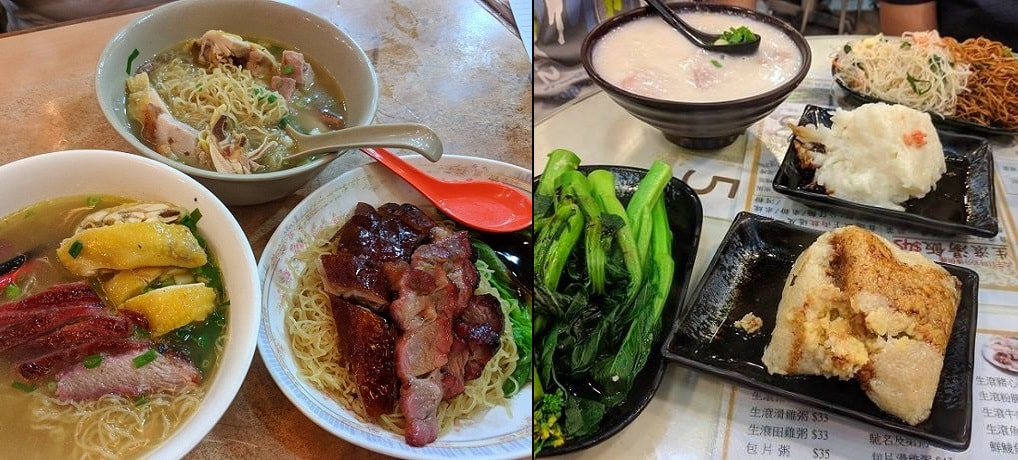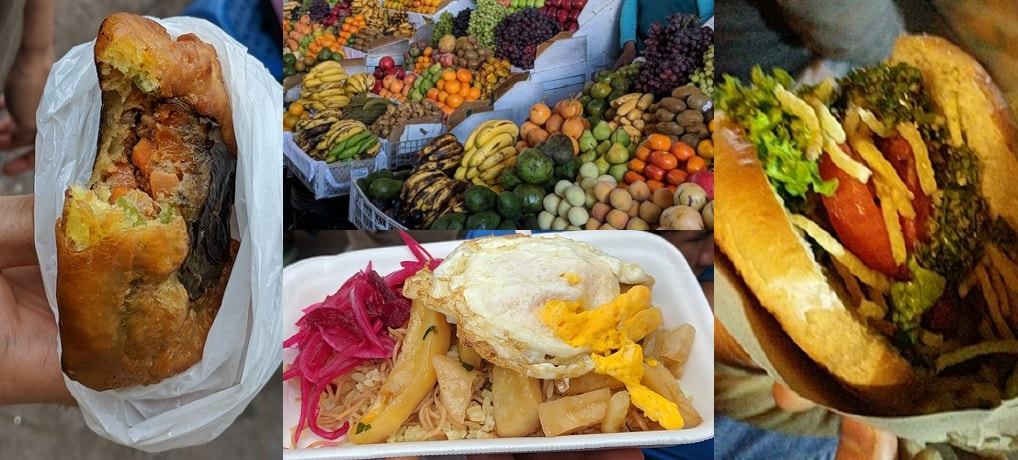
I touch on street food in Lima here, but they didn’t have that much there so this is primarily food found in Cusco and the Sacred Valley. Street food in Cusco and the Sacred Valley is delicious, but varies greatly in price and quality (and quality is often not dictated by price). You can go to two vendors that seem nearly identical and get something nearly inedible from one and delicious from the other. Prices are very reasonable, making it easy to eat your way across the city, trying a little bit of everything, and I highly recommend that you do.
We love to try everything, but since the water is not safe to drink in Peru, we tried to be a little extra cautious to keep from getting sick, while still enjoying the food. Many people will advise you to only eat in tourist restaurants, but this is not our style. We stuck primarily to hot foods and fruits with skin. Before the trip, we got the oral Typhoid vaccine and made sure we were up to date on all of our routine shots. Maybe we lucked out, but we never got sick.
Other Food
See Peru - Restaurant Food for specific restaurants that we tried and a bit about the cuisine.
See Peru - Markets for Cusco’s San Pedro Market and other markets.
Fruit
Our hotel in Cusco had a fruit basket every morning with lots of safe and tasty fruits, but we also went to the San Pedro Market to seek out some special fruits that we had to try. Some interesting ones:
-
Avocado – A little different from the Haas ones we are familiar with but very similar and delicious. Served with almost every meal plain, in salads, or stuffed (delicious).
-
Papaya – Lightly sweet, but not a ton of flavor.
-
Lucama – One of my favorite Peruvian fruits that we can’t get in the States. Butterscotch flavor with a strange flesh, similar to a cooked sweet potato in texture. The outer green skin peals away and the fruit is quite soft. There are generally one or two large pits. Very tasty and claims some medicinal properties. I would recommend the market for this one. We asked one of the vendors and she picked out a perfect one for us. Later we got one at the grocery store and it was just ok. These are a little expensive by Peru standards (about $1-3 per fruit) because they are said to have medicinal properties, but seeing as this is one of the only places you’ll probably ever see them I think they are worth a try.
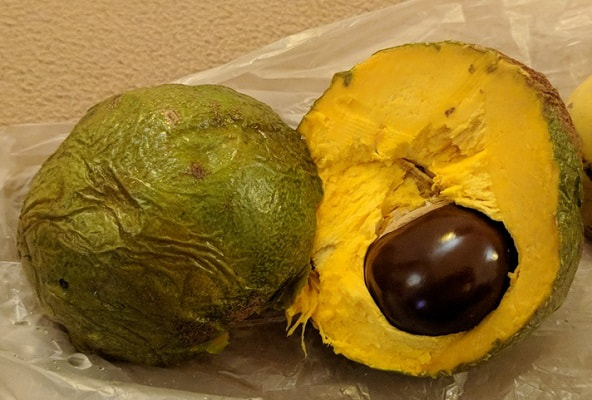
- Cherimoya (custard apple) – My other favorite Peruvian fruit. This tastes and looks nothing like and apple. The flavor is sweet with a hint of a tanginess and the texture is creamy. There are several bean size seeds in the flesh and the skin is an inedible iridescent green with a leaf-like scalloped pattern.
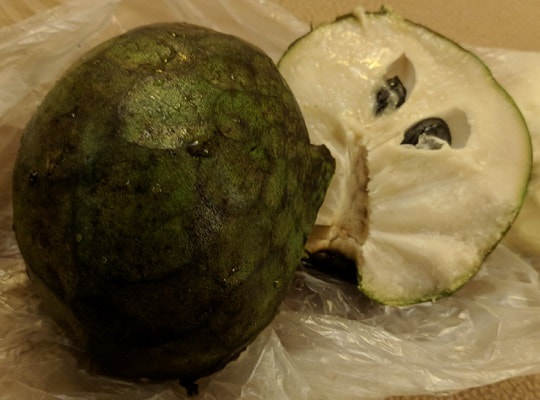
- Aguaymanto (cherry) – These look like tiny yellow tomatillos and are fully edible, aside from the stem and papery exterior skin. The ones I had were at the hotel were very sour.
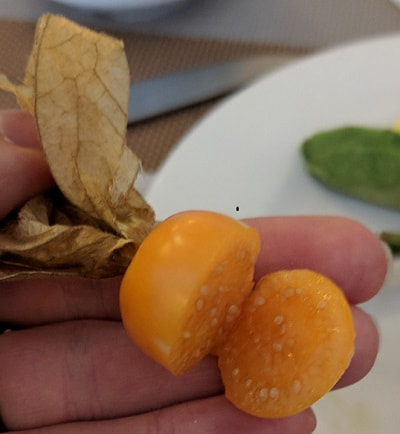
- Pepino – Yellow fruit with purple stripes, tasty but not special. Tastes like a honeydew melon. The skin is edible but we just ate the flesh.
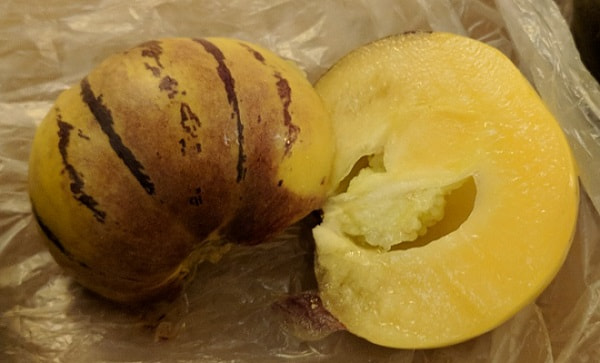
- Passion Fruit – We had a couple different kinds. Granadilla (left image) looks like a smooth skinned orange with a stem and that one was delicious. The inside was a sweet jelly with crunchy tangy seeds. The skin is quite hard on these and you have to crack them open. The other was a yellow slightly oblong orb with orange flesh and green seeds. It may have been a Tumbo (right image). I don’t recommend these, as the flavor was extremely tart.
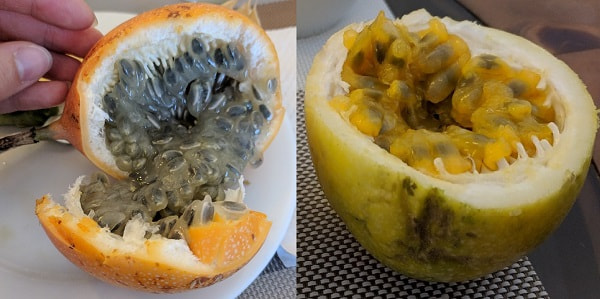
-
Grapes – The hotel had a basket of all different grapes so I tried a few of each and was impressed. Each one had a unique intense flavor, different from the standard red or green grapes we have in the grocery store. They all had seeds that were very bitter if you chew them so be careful.
-
Prickly pear cactus fruit – Tastes similar to watermelon, but has many unpleasant crunchy seeds and inedible skin. We did not enjoy this fruit.
-
Fruit carts and wheelbarrows - You will see many vendors selling fruits like sliced pineapple, watermelon, and pomegranates from wheel barrows.
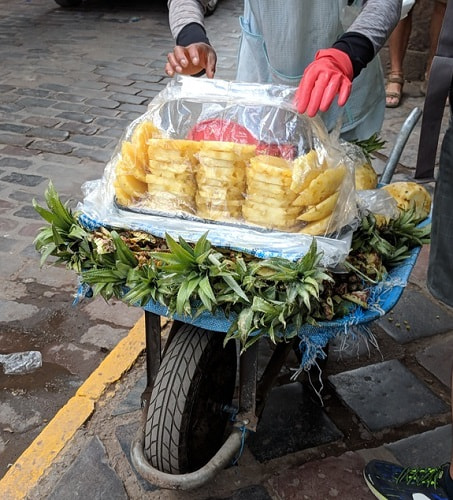
Breakfast
All of our breakfasts were provided by our hotels. They generally consisted of eggs, bread with jam, a hot drink and fruit. Sometimes there was cereal, yogurt, or other choices. The cereals were usually sweetened. In the morning the restaurants offered similar fare for about 10 soles or in Cusco street vendors sold rice and veggies with an egg or chicken for about 5 soles.
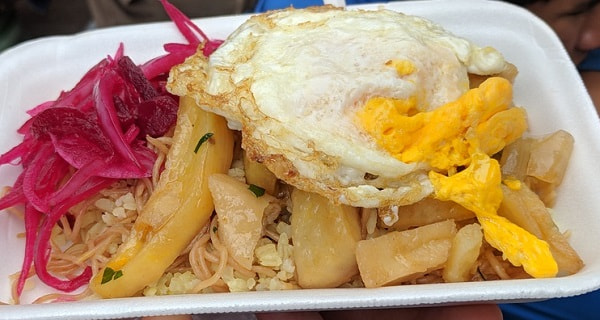
Snacks - Just a few of many
- Chicharrones – Fried chunks of pork fat. These can be a tasty snack when it is fresh but turns inedible quickly. If you buy this from a street vendor, make sure it is hot. They will often offer roasted corn with it, but this is generally a way to give you less.
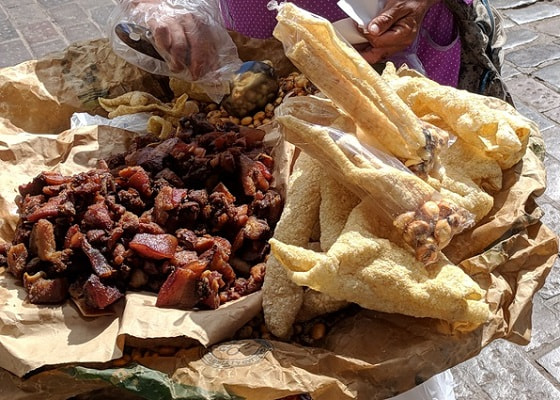
-
Popcorn – 1-2 sole for a portion. Not dripping in butter like your typical movie popcorn. Generally oil popped and lightly salted.
-
Roasted Corn – Crunchy snack but often very bland. Sold most places for about 1 sole for a sleeve.
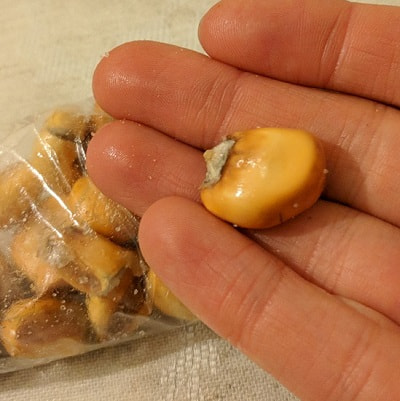
-
Quinoa Energy Snacks – Lightly sweetened puffed quinoa bars with dried fruit and sometimes seeds or nuts. Messy to eat, with almost no structural integrity.
-
Quail Eggs - We didn’t try these, but there are push carts everywhere.
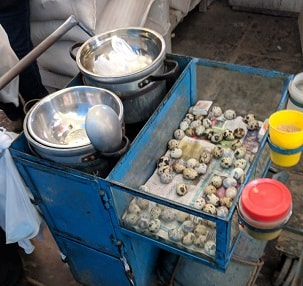
- Rocoto Relleno - The rocoto relleno in Cusco is a tasty treat you must try. They are quite unique from the stuffed peppers in other parts of the country. In Cusco, these are peppers stuffed with just about anything, but commonly cheese, veggies, potato and sometimes meat, then breaded with a corn batter and cooked. They come in green and red (mildly spicy) and are amazing. They were about 2 soles each on the street.
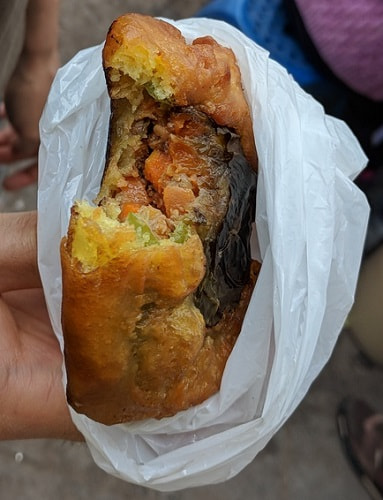
- Sweet Potato - Peru has hundreds of different varieties of potatoes and many different kinds of sweet potato as well. For 1 sole you can get some warm ones from one of the potato carts in Cusco.

Light Meals
-
Empanada - You can find these made with corn or wheat flour sold all over Cusco and they can be stuffed with just about anything. Corn with chicken was my favorite. Generally they are soft, not crispy deep fried shells like I have had elsewhere. They can be anywhere from tiny to huge and are generally 1-5 soles each, with 1-2 being common for the small ones sold on the street. Some places serve them with lime and/or salsa, but plain is most common. We samples several and they varied from stuffed to almost empty, but all were delicious, except the one we had at the airport at Confiteria Norita. It cost 7.50 soles and was absolutely terrible.
-
Tamale - These were generally a soft but course corn mixture, usually slightly buttery, and can be anywhere from savory to slightly sweet. They are always sold wrapped in corn husks and are generally primarily corn with little flecks of meat or raisins. They don’t have a lot of substance, but are nice.
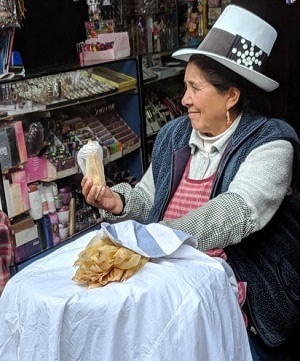
- Kebabs - They don’t call them kababs, but these carts with meat on sticks were everywhere in Ollantaytambo, there were several in Cusco, and even a few in Lima. Anticucho is marinated and grilled beef heart, a delicious national favorite, but chicken and sausage are also popular. When you purchase a stick they stab a potato on the end and you can usually request green sauce if you want it a little spicy. The meat is usually quite tender, but can be a bit dry if it sits on the grill too long and tends to be quite salty. They are usually 2-5 soles per stick.
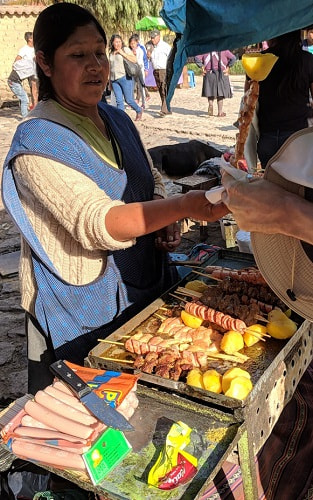
- Papa rellena - This is a potato filled with mashed potato and sometimes spicy sauce. We only tried it once and in my opinion was just ok, but there are many varieties out there.
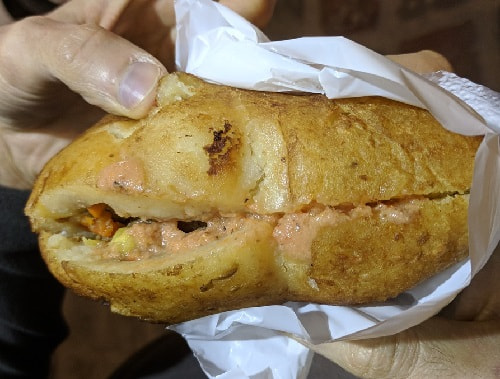
- Choripan Sandwich - We got this sandwich at the “Burger House” cart in Ollantaytambo and it was delicious. It was loaded with chimichuri sauce, veggies, crisps, and a nice piece of mildly spicy sausage on a toasted roll. This cost 6 soles (about $2).
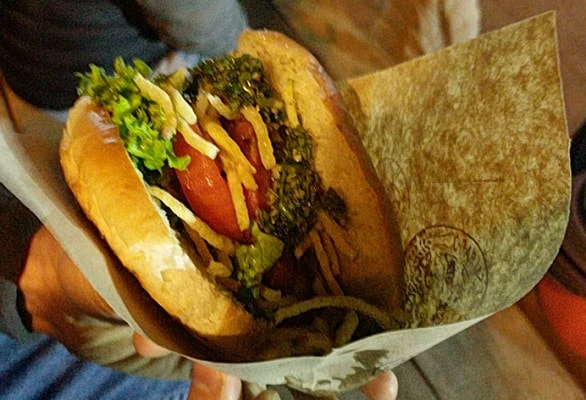
- Pork Plate - We got this at a school fundraiser in Ollantaytambo and it had a big slab of grilled pork on the bone, a bunch of giant corn (bland and starchy), and some spicy Peruvian green sauce.
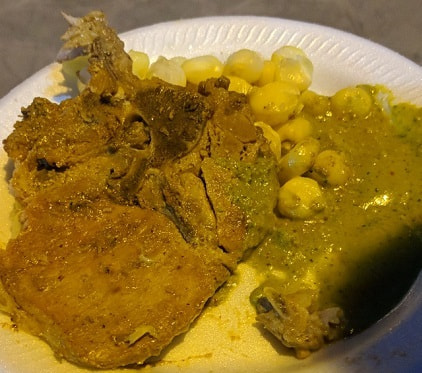
Beverages
-
Fresh Fruit Juices - These are great but can be risky for getting sick. The juice ladies in Cusco’s San Pedro Market have a good reputation and only use boiled water. We tried their juice and it was delicious. For 3 soles we got the entire contents of their blender, about 3 glasses full. Many of our hotels also offered fresh juice in the mornings with their breakfasts and they varied from weird to amazing. These fruit juices were often served warm. There are also many vendors in Cusco squeezing fresh orange juice on the street and the smell is amazing.
-
Tea - There are many vendors selling herbal tea out of buckets like the one below, which have the herbs decoratively displayed on top to advertise what they use. We also saw occasional steaming hot tea vendors with carts. These looked much safer, but we didn’t try it.

-
Chicha Morada - Sweet purple corn juice that is served with food or as a dessert. Every place makes it a little different, but the requirement is the purple corn. Many people add citrus, sugar, spices such as cinnamon and cloves, and pineapple rinds. It is served cold after boiling and straining it.
-
Beer - There are several Peruvian beers, but Cusqueña was the most common that we saw. If you are at a festival pay attention, because many of the vendors want the bottles back when you are finished because of the bottle deposit.
-
Pisco Sours - Not so much of a street food, but the country’s national cocktail. Pisco is a grape liquor, because in the colonial days the Peruvian’s were not allowed to produce wine. The pisco sour that we had was strong and very similar in flavor to a lime margarita.
-
Yellow Cola - This is a big thing and only sold in Peru, but we didn’t try it.
-
Sugar Cane Juice - This was another beverage that we didn’t try, but there are vendors pressing sugar cane for sweet juice. I would be concerned about cleanliness with this because we saw some of the sugar cane being delivered strapped to a car roof.

Sweets
- Cusco Sweets - Ice cream is common and usually 1-2 soles for a plain cone. They also have many varieties of cookies including shortbread, corn, and coconut. None of them are particularly memorable, but the corn is different and you can get a handful for 1 sole. Fried churros are also everywhere and can be found dipped or filled with dulce de leche (a caramel-like sweetened condensed milk), chocolate, or just dusted with sugar. They are 1-2 soles depending on the size and flavor and while many people go crazy for these, we weren’t big fans. There are also several kinds of sweet fruit cakes, sold by the slice, that are generally quite moist and not overly sweet. We even saw people selling these by the train in Aguas Calientes.
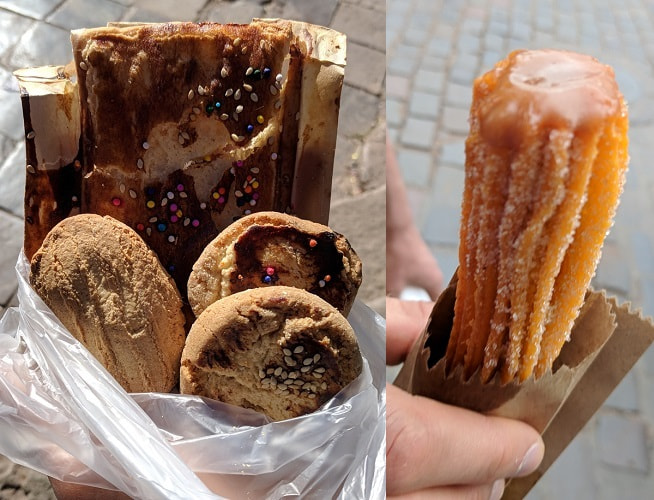
- Lima Sweets - While you can still find churros in the historic district of Lima, they have a slightly different array of commonly found sweets. In Miraflores they have cyclists with clear carts displaying a variety of cakes and pastries. My favorite was the one on the left, an apple cake. It has a tangy filling and nice texture. The cone filled with dulce de leche was way too sweet in my opinion. Picarones, Lima’s famous sweet potato doughnut with syrup (can be found fresh in Kennedy Park) was nothing special, a little bland and overpriced.
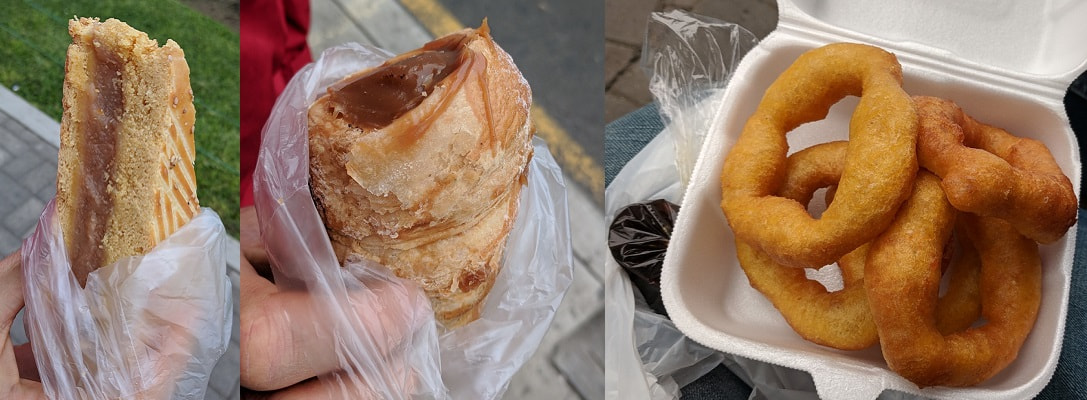
More?
Check out our full Peru Trip Itinerary.
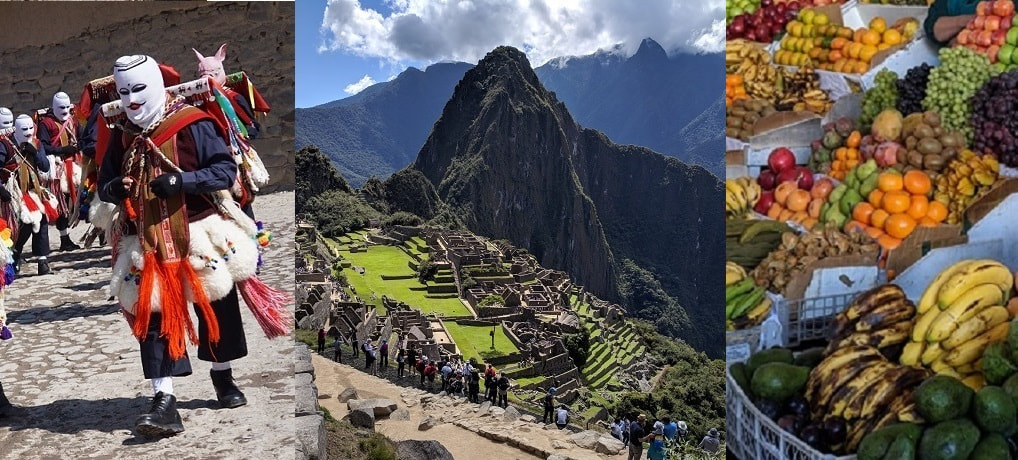
Read about the delicious Food of Malaysia,
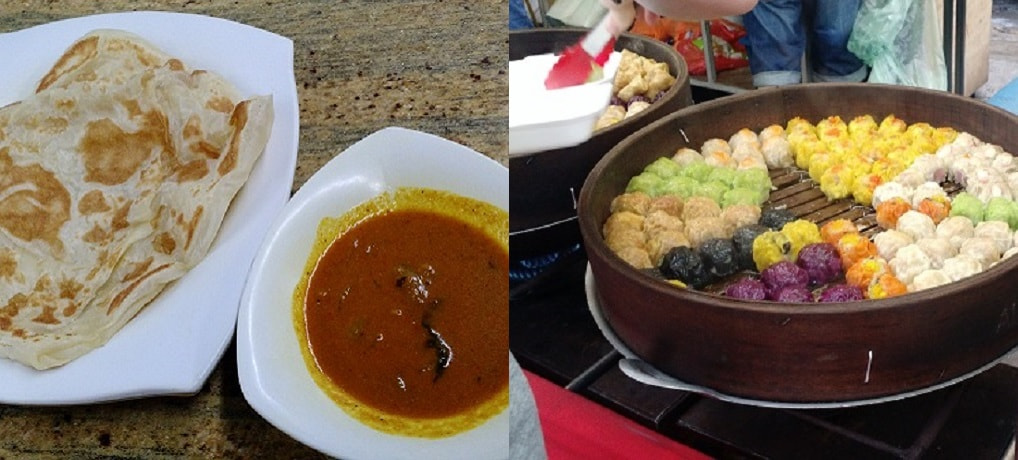
Or the melting pot of Hong Kong Food
